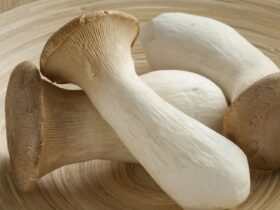“콩나물”은 콩의 씨앗이 발아하여 자란 어린 식물로, 주로 한국 요리에서 많이 사용됩니다. 일반적으로는 그 자체로 반찬으로 먹거나, 국이나 찌개에 넣어 요리합니다.
“콩나물”을 영어로 표현할 수 있는 방법
- Bean Sprouts (빈 스프라우츠)
- Soybean Sprouts (소이빈 스프라우츠)
- Mung Bean Sprouts (멍 빈 스프라우츠)
1. Bean Sprouts
“Bean Sprouts”는 일반적으로 콩나물을 의미하는 가장 일반적인 표현입니다. 이는 다양한 종류의 콩에서 자라는 싹을 포함합니다.
- “Bean sprouts are often used in Asian cuisines, such as stir-fries and soups.” (콩나물은 아시아 요리에서 볶음 요리와 국 등에 자주 사용된다.)
- “You can add bean sprouts to your salad for extra crunch.” (콩나물을 샐러드에 추가하여 바삭함을 더할 수 있다.)
2. Soybean Sprouts
“Soybean Sprouts”는 특히 대두(soybean)에서 자라는 콩나물을 의미합니다. 한국 요리에서 가장 많이 사용되는 형태입니다.
- “Korean dishes often feature soybean sprouts in soups and side dishes.” (한국 요리에서는 대두 콩나물이 국과 반찬에 자주 사용된다.)
- “Soybean sprouts are rich in vitamins and minerals.” (대두 콩나물은 비타민과 미네랄이 풍부하다.)
3. Mung Bean Sprouts
“Mung Bean Sprouts”는 녹두에서 자라는 콩나물로, 다른 종류의 콩나물과 구별됩니다.
- “Mung bean sprouts are commonly used in salads and Asian soups.” (녹두 콩나물은 샐러드와 아시아식 국물 요리에 자주 사용된다.)
- “You can find mung bean sprouts in many Asian grocery stores.” (많은 아시아 식료품점에서 녹두 콩나물을 찾을 수 있다.)
“콩나물”을 영어로 표현할 때는 “Bean Sprouts,” “Soybean Sprouts,” 또는 “Mung Bean Sprouts”와 같은 표현을 사용할 수 있습니다.













Leave a Reply